Related Research Articles

"The Adventure of the Empty House", one of the 56 Sherlock Holmes short stories written by Sir Arthur Conan Doyle, is one of 13 stories in the cycle collected as The Return of Sherlock Holmes. It was first published in Collier's in the United States on 26 September 1903, and in The Strand Magazine in the United Kingdom in October 1903.

"The Adventure of the Bruce-Partington Plans" is one of the 56 Sherlock Holmes short stories written by Sir Arthur Conan Doyle. It is one of eight stories in the cycle collected as His Last Bow (1917), and is the second and final main appearance of Mycroft Holmes. It was originally published in The Strand Magazine in the United Kingdom and in Collier's in the United States in 1908.
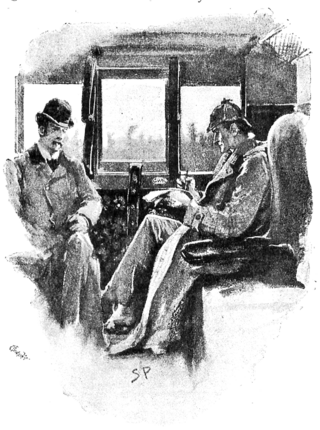
"The Boscombe Valley Mystery", one of the fifty-six short Sherlock Holmes stories written by Sir Arthur Conan Doyle, is the fourth of the twelve stories in The Adventures of Sherlock Holmes. It was first published in the Strand Magazine in October 1891.

Sherlock Holmes in the 22nd Century is a British-American animated television series in which Sherlock Holmes is brought back to life in the 22nd century. The series is a co-production by DIC Entertainment, L.P. and Scottish Television Enterprises and was nominated for a Daytime Emmy for Special Class Animated Program.

"The Man with the Twisted Lip", one of the 56 short Sherlock Holmes stories written by Sir Arthur Conan Doyle, is the sixth of the twelve stories in The Adventures of Sherlock Holmes. The story was first published in the Strand Magazine in December 1891. Doyle ranked "The Man with the Twisted Lip" sixteenth in a list of his nineteen favourite Sherlock Holmes stories.
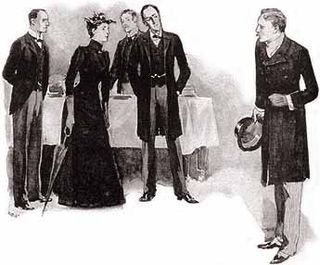
"The Adventure of the Noble Bachelor", one of the 56 short Sherlock Holmes stories written by Sir Arthur Conan Doyle, is the tenth of the twelve stories collected in The Adventures of Sherlock Holmes. The story was first published in The Strand Magazine in April 1892.

Detective Inspector G. Lestrade, or Mr. Lestrade, is a fictional character appearing in several of the Sherlock Holmes stories written by Arthur Conan Doyle. Lestrade's first appearance was in the first Sherlock Holmes story, the novel A Study in Scarlet, which was published in 1887. The last story in which he appears is the short story "The Adventure of the Three Garridebs", which was first published in 1924 and was included in the final collection of Sherlock Holmes stories by Doyle, The Case-Book of Sherlock Holmes.
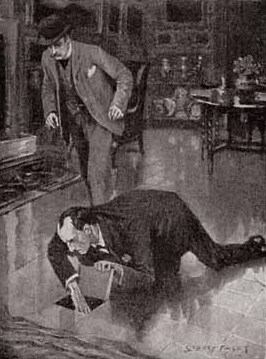
"The Adventure of the Second Stain", one of the 56 Sherlock Holmes short stories written by Sir Arthur Conan Doyle, is one of 13 stories in the cycle collected as The Return of Sherlock Holmes (1905) and the only unrecorded case mentioned passively by Watson to be written. It was first published in The Strand Magazine in the United Kingdom in December 1904, and was also published in Collier's in the United States on 28 January 1905. Doyle ranked "The Adventure of the Second Stain" eighth in his list of his twelve favourite Holmes stories.

"The Adventure of the Dying Detective", in some editions simply titled "The Dying Detective", is one of the 56 Sherlock Holmes short stories that were written by Sir Arthur Conan Doyle. It was originally published in Collier's in the United States on 22 November 1913, and The Strand Magazine in the United Kingdom in December 1913. Together with seven other stories, it was collected in His Last Bow.
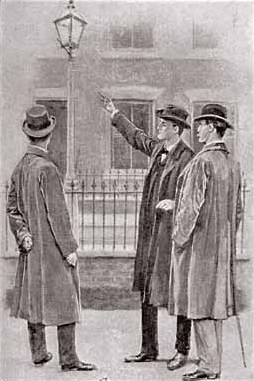
"The Adventure of the Six Napoleons", one of the 56 Sherlock Holmes short stories written by Sir Arthur Conan Doyle, is one of 13 stories in the cycle collected as The Return of Sherlock Holmes. It was first published in Collier's in the United States on 30 April 1904, and in The Strand Magazine in the United Kingdom in May 1904.

"The Adventure of the Norwood Builder", one of the 56 short Sherlock Holmes stories written by Sir Arthur Conan Doyle, is the second tale from The Return of Sherlock Holmes. The story was first published in Collier's (US) on 31 October 1903 and in The Strand Magazine (UK) in November 1903.

"The Adventure of the Retired Colourman" (1926), one of the 56 Sherlock Holmes short stories written by British author Sir Arthur Conan Doyle, is one of 12 stories in the cycle collected as The Case-Book of Sherlock Holmes.
The Baker Street Boys is a British television series made by the BBC and first shown in 1983. The series recounts the adventures of a gang of street urchins living in Victorian London who assist the legendary detective Sherlock Holmes in solving crimes and find themselves tackling cases of their own.

Sherlock Holmes is the overall title given to the series of Sherlock Holmes adaptations produced by the British television company Granada Television between 24 April 1984 and 11 April 1994.
Sherlock Holmes and the Case of the Silk Stocking is a British television film originally broadcast on BBC One in the UK on 26 December 2004. Produced by Tiger Aspect Productions, it was written by Allan Cubitt and was a sequel to the same company's adaptation of The Hound of the Baskervilles, made for the BBC two years previously. Although Silk Stocking retained the same Dr. Watson, Ian Hart, this time the character of Sherlock Holmes was played by Rupert Everett.
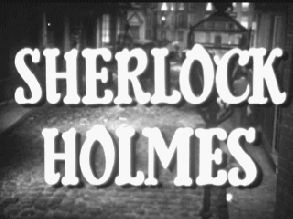
Sherlock Holmes is an American detective television series syndicated in the autumn of 1954, based on the Sherlock Holmes stories of Arthur Conan Doyle. The 39 half-hour mostly original stories were produced by Sheldon Reynolds and filmed in France by Guild Films, starring Ronald Howard as Holmes and H. Marion Crawford as Watson. Archie Duncan appeared in many episodes as Inspector Lestrade. Richard Larke, billed as Kenneth Richards, played Sgt. Wilkins in about fifteen episodes. The series' associate producer, Nicole Milinaire, was one of the first women to attain a senior production role in a television series.
This article describes minor characters from the Sherlock Holmes stories by Sir Arthur Conan Doyle, and from non-canonical derived works. The list excludes the titular character as well as Dr. Watson, Professor Moriarty, Inspector Lestrade, Mycroft Holmes, Mrs. Hudson, Irene Adler, Colonel Moran, the Baker Street Irregulars, and characters not significant enough to mention.
Sherlock Holmes and Sir Arthur Conan Doyle's Sherlock Holmes are two British series of Sherlock Holmes adaptations for television produced by the BBC in 1965 and 1968 respectively. The 1965 production, which followed a pilot the year before, was the second BBC series of Sherlock Holmes adaptations, after one starring Alan Wheatley in 1951.
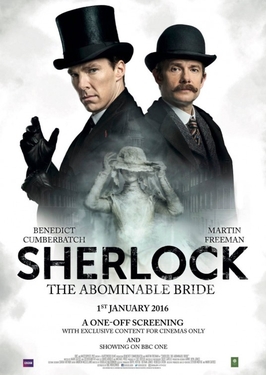
"The Abominable Bride" is a special episode of the British television programme Sherlock. The episode was broadcast on BBC One, PBS and Channel One on 1 January 2016. It depicts the characters of the show in an alternative timeline: the Victorian London setting of the original stories by Arthur Conan Doyle. The title is based on the quote "Ricoletti of the club foot and his abominable wife" from "The Adventure of the Musgrave Ritual" (1893), which refers to a case mentioned by Holmes. The story also draws on elements of original Conan Doyle stories of Holmes such as "The Five Orange Pips" (1891) and "The Final Problem" (1893).
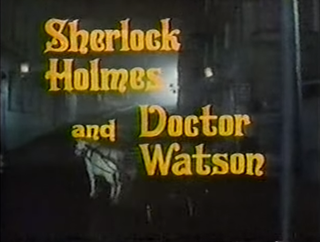
Sherlock Holmes and Doctor Watson is a television series created by Sheldon Reynolds and based on characters and storylines from Sir Arthur Conan Doyle's Sherlock Holmes stories. It starred Geoffrey Whitehead, Donald Pickering and Patrick Newell in the title roles of Sherlock Holmes, Doctor Watson and Inspector Lestrade respectively. The series is considered rather obscure, and was filmed on a relatively low budget in Poland. The series combined adaptations of Arthur Conan Doyle's source stories with original screenplays that saw Holmes face brand new cases.
References
- 1 2 3 4 Haining, Peter (1994). The Television Sherlock Holmes. Virgin Books. pp. 51–52. ISBN 0-86369-793-3.
- 1 2 3 4 5 6 7 8 9 10 11 Barnes, Alan (2011). Sherlock Holmes on Screen. Titan Books. pp. 296–298. ISBN 9780857687760.
- ↑ "Sherlock Holmes". The Museum of Broadcast Communications. Retrieved 15 January 2012.
- ↑ Eyles, Allen (1986). Sherlock Holmes: A Centenary Celebration . Harper & Row. p. 101. ISBN 0-06-015620-1.
- ↑ "The wide world of Sherlock Holmes". The Sherlock Holmes Society of London. Archived from the original on 9 December 2011. Retrieved 1 January 2012.
- ↑ Redmond, Christopher (2009). Sherlock Holmes Handbook: Second Edition. Dundurn. p. 243. ISBN 9781770705920.